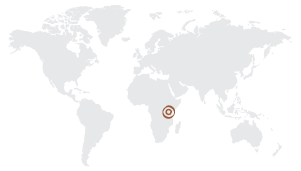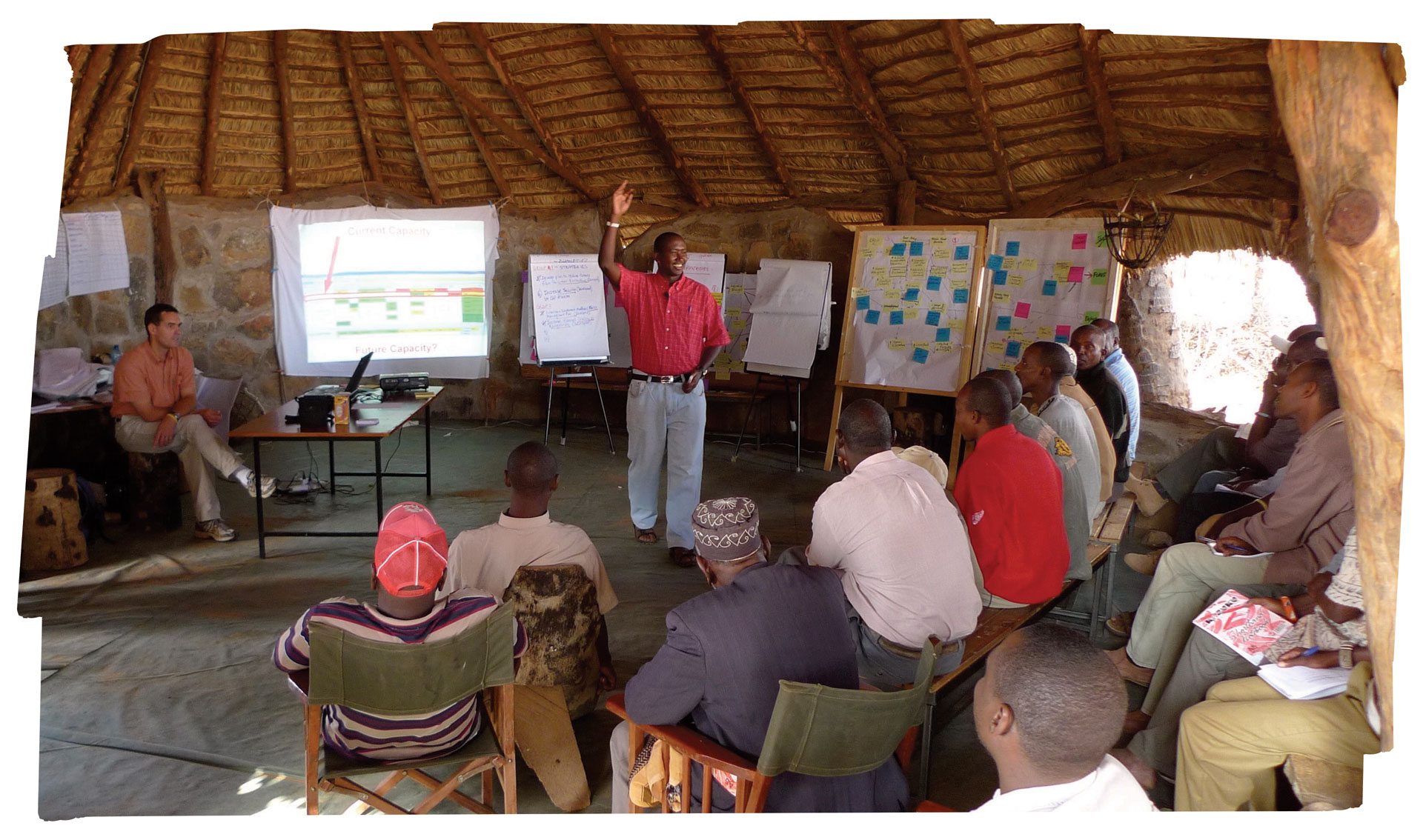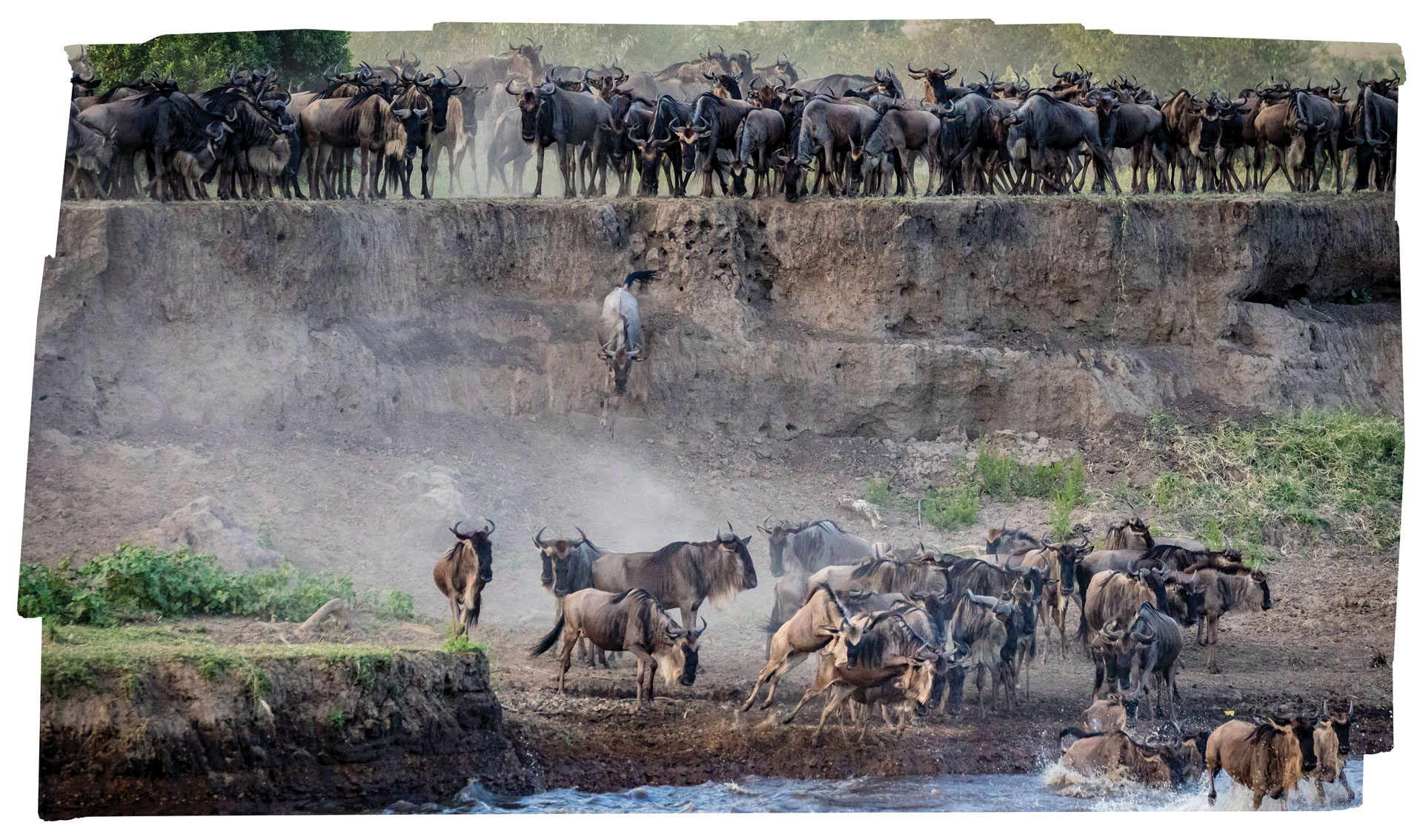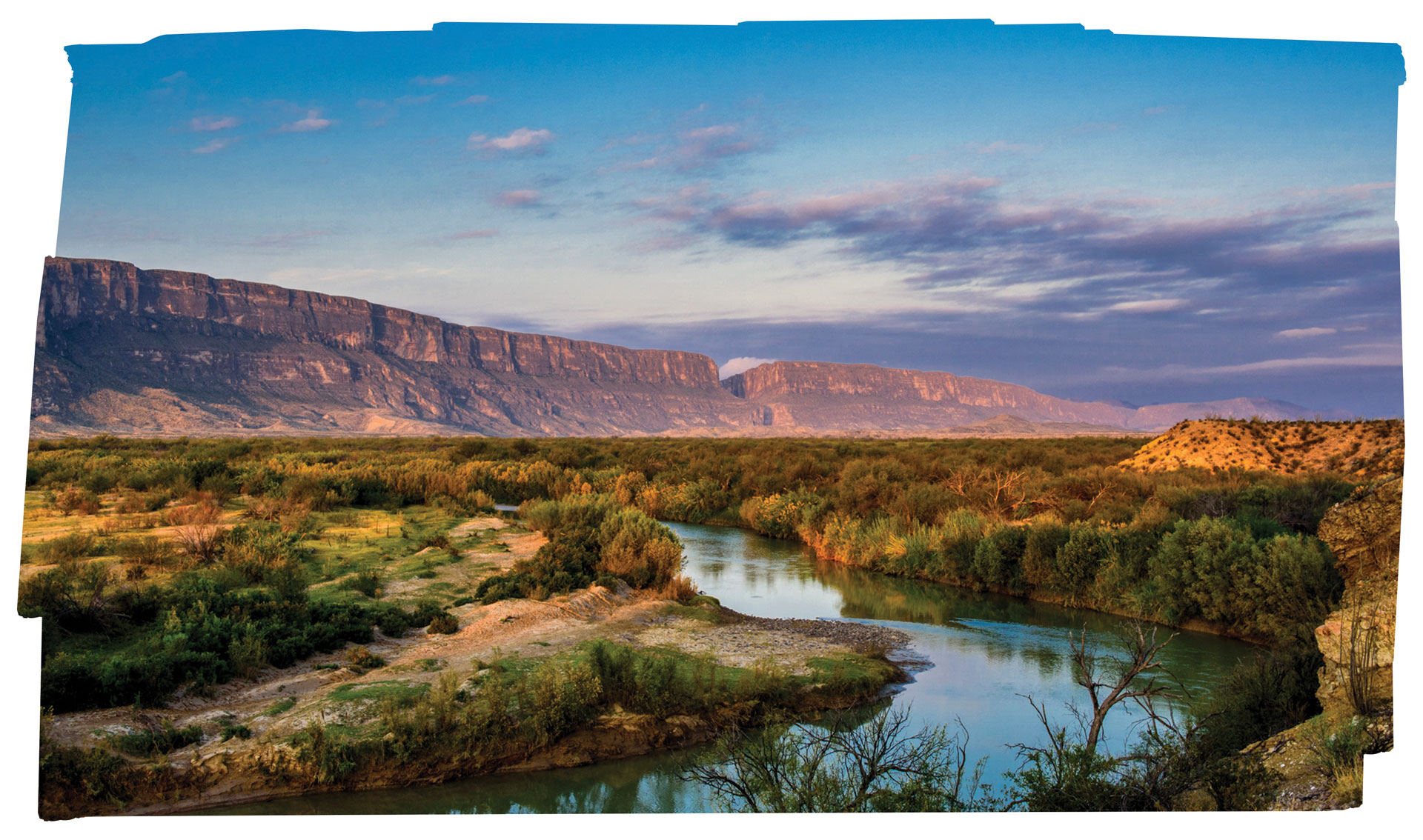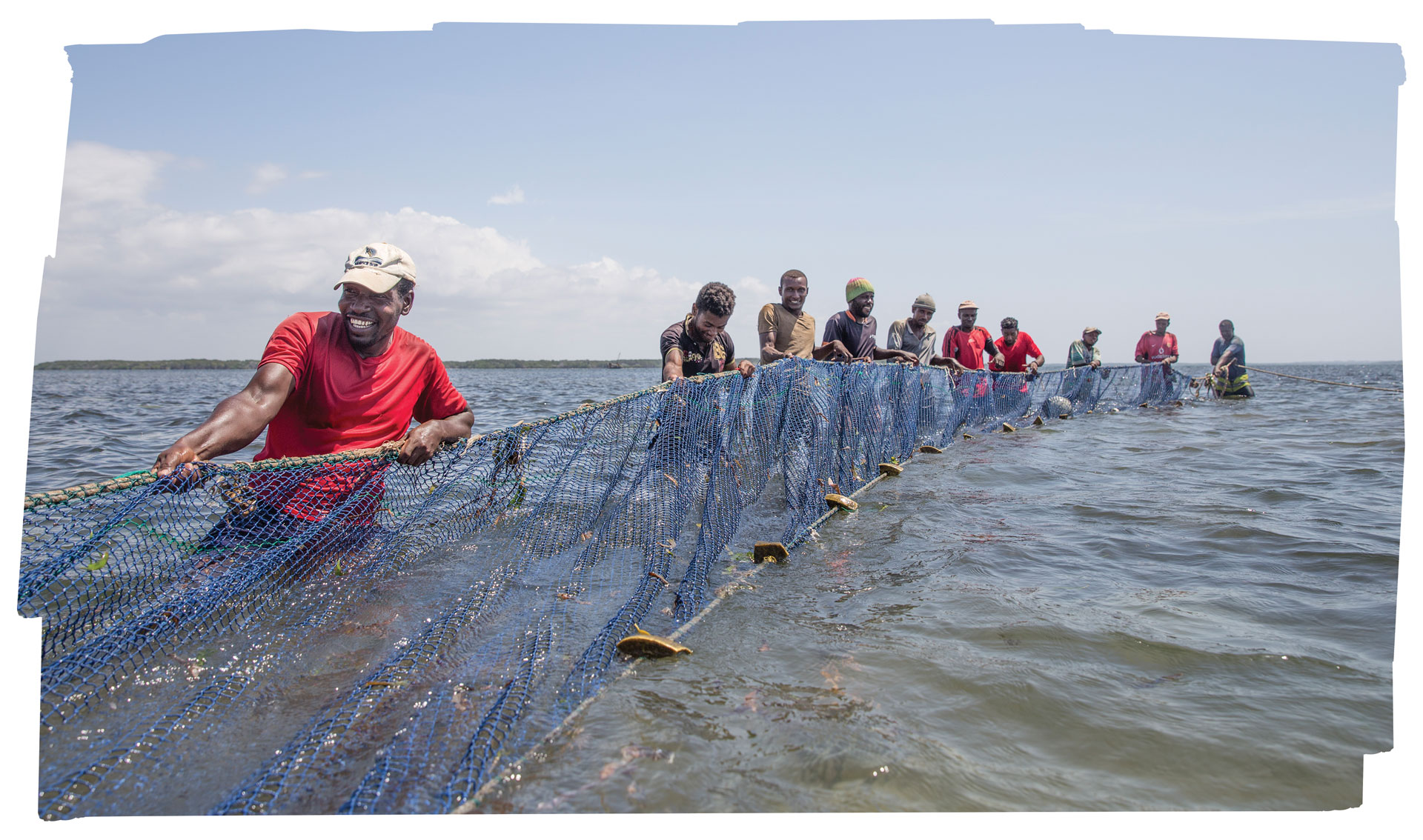Securing Rights to Territories and Resources in Tanzania
Tanzania’s northern rangelands stretch across 8 million acres (3.2 million hectares) and include some of Africa’s most important wildlife migration sites, including the Serengeti and the Ngorongoro Crater, as well as the homes of Maasai pastoralists and the Hadzabe and Akie, some of the last remaining hunter-gatherer Tribes on Earth. Population density has nearly tripled in this region in the last 40 years, which is leading to competition between land uses (mainly agriculture and grazing), threatening pastoralists and hunter-gatherer ways of living, as well as the wildlife that depend on these lands for grazing and migration. Local villages have the right to subdivide all their village land, and once land is officially given to an individual, that land can be further subdivided to sons. This law favors local and individual ownership. Additionally, the Tanzanian central government has significant authority and can expropriate land for large commercial farms if the village does not hold official title (ownership) via a Certificate of Customary Right of Occupancy (CCRO).
TNC in Africa is working with communities and partners to secure legal tenure and management rights for pastoralist and hunter-gatherer communities through collective CCRO designations. This legal tool—pioneered by partner Ujamaa Community Resource Trust and building off existing CCRO designations for individuals—allows communities to own and manage traditional lands and earn benefits from natural resource-based enterprises such as ecotourism and carbon credits. The collective CCRO provides an additional layer of protection for common pool resources that is helpful for long-term management and improved and secured grazing access over time.
By expanding this model across Tanzania’s rangelands, we are seeing more equal access and ownership, and more secure communal rights to land over the long-term as the basis for pastoralist livestock production and land management systems. When cross-border grazing corridors are kept open, livestock and wildlife become healthier, which reduces conflict between villages and can increase their revenue via sustainable livelihood opportunities. The tenure mechanism itself is linked to sustainable land management via the requirement for Village Land Use Plans and provides a basis for negotiating with government and tourism operators. Although some cases of farming encroachment exist, when tested, the courts have ruled in favor of the CCRO and easements. Over the past nine years, 5 million acres (~2 million hectares) have been put under Village Land Use Plans (the first step in obtaining a CCRO designation). In the entire landscape, 4.2 million acres (~1.7 million hectares) of rangelands have been protected via 80 CCROs and two Wildlife Management Areas (areas of communal land set aside exclusively as habitat for wildlife by member villages), with additional CCROs covering 370,650 acres (~150,000 hectares) expected by June 2022. The success of CCROs demonstrates a pathway for preventing land conversion that could lead to loss of grazing areas.
However, there are still ongoing challenges that must be resolved. Even after land use plans were demarcated and CCROs were formed, there was some overgrazing in CCROs. TNC’s holistic grazing management program aims to promote best grazing approaches in the CCROs, such as rotational grazing, blocking systems, and bunched herding that can reduce grazing pressure on CCRO lands. The program will also help secure inter-village grazing agreements that seek to connect CCROs with other grazing areas. While CCROs are increasingly recognized as legitimate by local stakeholders, there are ongoing governance challenges and a need to ensure that all CCROs are equally respected.
Addressing Water Scarcity Through Indigenous Rights in the Colorado River Basin
The Colorado River Basin is one of the United States’ most iconic landscapes, home to the Grand Canyon and an array of diverse traditional and Tribal stewards. It supports a wide variety of freshwater and terrestrial ecosystems that host enormous biodiversity, and it is home to many cultures, communities, and economic interests. For thousands of years, water from the Colorado River and its tributaries has been the life source for local Indigenous Peoples, and is essential to their cultural and economic well-being. Colonization of lands and waters by settlers drastically altered the ability of Indigenous Peoples to continue to inhabit, use, and care for the rivers and lands in this area. Genocide, forcible removal from ancestral lands, broken treaties, and a host of federal laws and policies designed to undermine Tribal control of resources and to assimilate Indigenous Peoples deprived them of access to the lands, waters, food, and other natural resources of the Basin. In addition, building of the extensive water infrastructure system of dams, canals, and reservoirs further degraded the natural environment and largely neglected the water needs of Indigenous Peoples, who were forced into non-Indigenous farming and ranching and life on arid reservations.
With more than 40 million people depending on its water for both agriculture and domestic needs, the Colorado River is intensively controlled, and a complex set of rules and laws dictates water management and use across the Basin’s many interested parties. Legal precedent entitles Tribal Nations to substantial, senior-priority water rightse in the Basin. However, major water-related decision making forums and processes have yet to sufficiently recognize the role of Tribal management of water and natural resources. Currently, 22 of the 30 Tribal Nations in the Basin have quantified water rights in at least one state in which their reservations are located, and control about 3.5 billion cubic meters of water per year, which is approximately 20 percent of the water in the Basin. That amount is expected to increase as Tribal Nations with remaining claims in some Basin states quantify their water rights. Significant portions of these Tribal water rights are currently undeveloped (i.e., not being exercised or used) but will likely displace current water uses when they are developed.f Despite the amount of Tribal water, many powerful actors in the Basin (e.g., federal and state governments, major water users including municipalities and agricultural businesses) have intentionally and systematically excluded Tribal Nations from efforts to protect and develop their water rights, and thwarted voluntary Tribal participation in policy negotiations. As recently as 2019, because of the unwillingness of state and federal negotiators to take a hard look at the role of Tribal water in assessing water scarcity risk and solutions, the Tribal Nations have been mostly excluded from participating in creating programs designed to reduce water scarcity risk. This exclusion has resulted in solutions that fail to recognize and respect treaty and other rights of Indigenous Peoples, and missed opportunities to work with Tribal Nations to mobilize Tribal water to address the Basin’s socio-economic and environmental challenges. These policy processes are also missing a critical opportunity to integrate Indigenous perspectives on the stewardship of resources—including Indigenous cultural and spiritual connections to the lands and waters in the Basin—to shape the future of this shared and sacred river.
TNC’s Colorado River Program works across all seven Basin states in the United States (Wyoming, Colorado, Utah, New Mexico, Arizona, Nevada, and California), in Mexico, as well as at a Basin scale. The focus is on three strategies: working to balance water needs among the many users (including nature), improving water infrastructure and other operations to improve environmental flows, and advancing a Tribal Water Initiative. Through the Tribal Water Initiative, we are working with Tribal Nations to advance their interests and their positioning to address the pressing socio-economic and environmental challenges, by elevating Tribal voices in critical policy discussions to support their stewardship of the Basin, as well as creating innovative on-the-ground freshwater conservation projects that support more equitable and durable solutions for people and nature. For instance, in the renegotiation process of the Colorado River Interim Guidelines for Lower Basin Shortages and Coordinated Operations for Lakes Powell and Mead, TNC was invited to work with Tribal Nations and multi-Tribal organizations to understand and advance their goals, such as ensuring that the next guidelines reflect a comprehensive understanding of Tribal water rights.
Engaging Tribal Nations in the Colorado River Basin is changing TNC’s approach to water scarcity work. Our initial engagement is showing promising opportunities for both project and policy work to address water scarcity and environmental needs in the Basin. It also requires us to begin considering some of the critical equity and human rights implications for Indigenous Peoples in our work, including the need for reconciliation processes addressing past resource deprivation and acknowledgement of the conservation sector’s role in that legacy. We are committed to crafting solutions that do not further disadvantage vulnerable communities but, rather, build partnerships to amplify the strength and power of these communities to co-create mutually beneficial solutions and projects.
Communal Rights in Kenyan Coastal Fisheries
Sitting at the northern edge of Kenya’s coast, the Lamu-Tana Seascape hosts rich and diverse coastal resources, including over 66 percent of Kenya’s mangroves, some of Kenya’s highest densities of inshore finfish and crustaceans, and a unique mix of Arabian Gulf with East African coral and fish species. Rare and endemic corals along with endangered fish, sea turtles, coastal sharks, and a very small number of dugong also occur here. Livelihoods of the coastal communities in the area are largely dependent on these natural resources, and with few employment alternatives, pressure and over-exploitation are increasing. Along with ongoing conflict and remoteness that have restricted development and access to markets, the livelihoods and resources in the area are at risk.40
To increase local ownership and management of these resources, TNC, Northern Rangelands Trust (NRT), and other partners are supporting communities in securing co-management rights across multiple natural resource management jurisdictions and communities to integrate a holistic resource management approach for the area’s coastal ecosystems. The “community conservancy” model, regulated under the Wildlife Conservation and Management Act (2013), has been applied broadly for community management of terrestrial areas. With the support and technical guidance of NRT and TNC, this approach has been adopted in the Lamu-Tana Seascape for coastal communities and marine areas, connecting multiple villages, fisheries, and habitats under an overarching Conservancy Development Plan. This plan incorporates important design guidelines necessary for effective coastal conservation.
Four coastal community conservancies—Kiunga, Awer, Pate, and the Lower Tana Delta—have been established, and within those conservancies multiple community resource management institutions must be authorized to provide legal empowerment to the conservancy and communities in managing the full suite of coastal resources, given the various laws and jurisdictions at play. Community-run co-management units, called Beach Management Units (BMUs), are responsible for managing artisanal fishery use and access. BMUs are supported by a legal framework within Kenya’s Fisheries Regulations (2007), and are intended to bring resource user groups and governmental bodies together to share fisheries management and conservation responsibilities. Within the four community conservancies,21 fisheries BMUs have been established and training conducted on leadership, fisheries co-management, and financial management. Each BMU submitted their by-laws to county governments for review and received a new BMU registration certificate, effectively empowering communities’ control over their fisheries resources. The establishment of the conservancy and associated BMUs have enabled the Pate Marine Community Conservancy to create temporary octopus closures (a type of locally managed marine area) that have led to increased participation of women in conservation activities, increased catch and size of the octopus, better market price, increased population of other fish, and improved habitat condition.
Learning exchange visits between Pate and the Kiunga and Lower Tana Delta conservancies inspired the Kiunga Community Conservancy to implement similar closures in their fishing areas within the Kiunga Marine National Reserve (KMNR). Marine protection and conservation are managed by the Kenya Wildlife Service (KWS) in the form of marine parks, which are well-enforced no take zones protecting key fisheries and marine reserves, where subsistence fishing with traditional fishing gear is allowed and is poorly enforced. Because of Kiunga’s marine reserve designation, a more complicated, formal process, and approval at the national level was required to secure community management authority under KWS. This included completing, village-by-village, community awareness and capacity building meetings on establishing temporary octopus closures, changing the conservancy name to Kiunga Community Wildlife Association (KICOWA) to operate within a gazetted area, and presenting a letter to KWS on the community’s decision to establish temporary octopus closures within KMNR. Upon completion of this process, KICOWA successfully established two temporary octopus closures in March 2021, which were the first to be completed within a national marine reserve and a significant development in integrating a more community-based approach in Kenya’s marine protected area management.
Achieving effective management of coastal ecosystems in northern Kenya requires a complex alignment of the laws and institutions associated with each resource and tenure designation. TNC and local partners’ work has focused on strengthening governance by supporting communities in establishing and staffing the necessary institutions to collaboratively manage natural resources, and enabling synergies to be developed across the various community-led conservation institutions.

